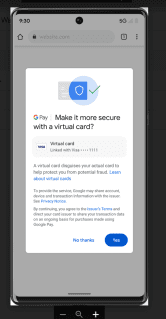
In what it calls a “sign of growing importance of protecting digital transactions,” Google said Wednesday (May 11) it is bringing virtual cards to Autofill on Chrome and Android.
And with that change, Visa says it will replace 16-digit card number used in Autofill when users make purchases from their desktop or mobile device.

“Tokenization is the magic behind it,” Visa said in a news release. “To put it simply, Visa is adding a kind of ‘personal security guard’ to safeguard the consumer’s card number.”
For consumers, this means that when you fill out your payment information on a merchant’s checkout page, your card details will be hidden from that merchant, and thus hidden from digital fraudsters. Google and Visa say there’s no action consumers need to take, as this layer of security is being added automatically.
“E-commerce volume has grown by more than 50 percent since the emergence of the pandemic,” the release said. “While shopping online is convenient, consumers also expect their online transactions to be ironclad from fraudsters.”
See also: Inside Visa’s Fraud-Fighting Cyber Machine
Last month, PYMNTS’ Karen Webster spoke with Visa Chief Risk Data Officer Dustin White, who said that as eCommerce has risen, fraud has gotten harder for consumers to detect.
“Creativity is skill ‘No. 1’ on a fraudster’s resume,” White said.
That creativity has paid off, as well, as 78% of people who get unsolicited links still click on them. Once fraudsters get inside our accounts, they can thieve data that helps them make fraudulent transactions. In many cases, consumers may not realize they’ve been scammed for quite a long time.
White told Webster that tokenization protects consumer data regardless of where transactions happen, especially in the cloud.
He said tokenization rose 60% year over year and has led to a 2.5% rise in approval rates and 28% drop in the rate of fraud.